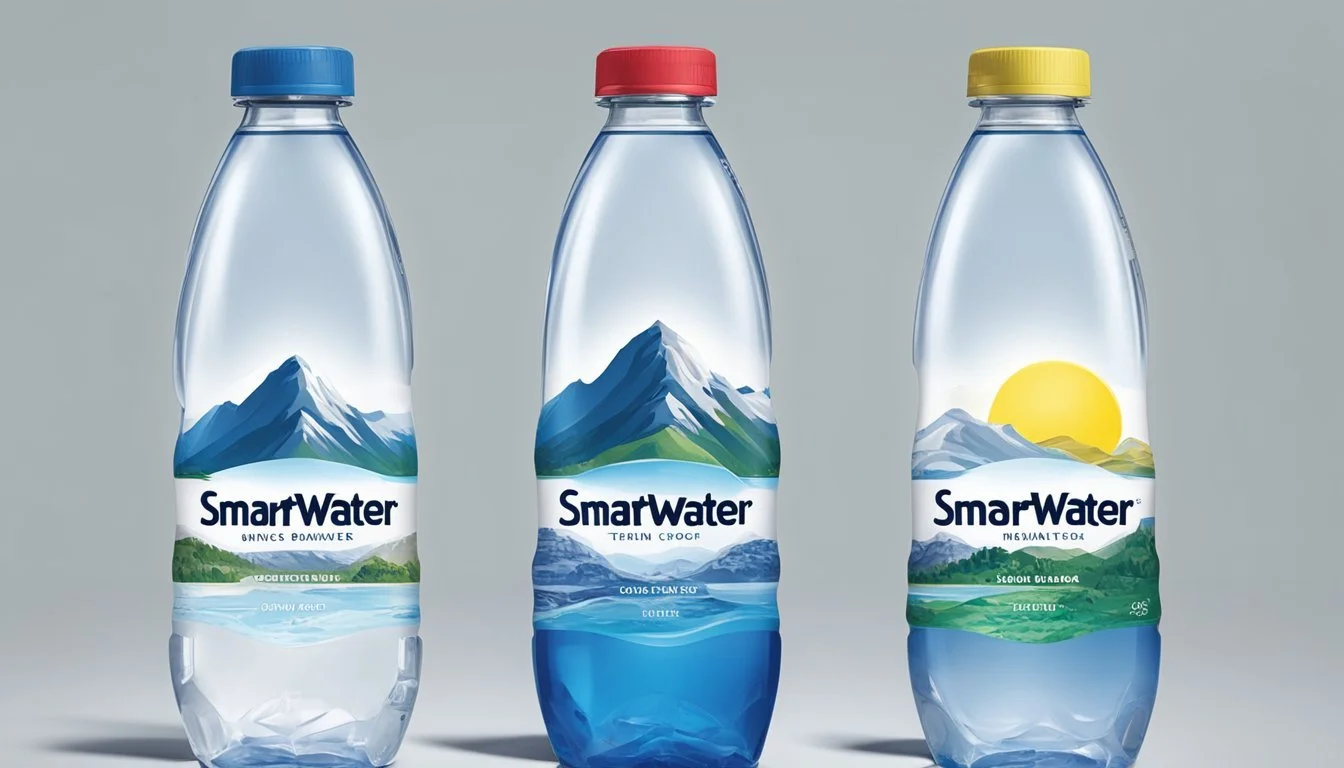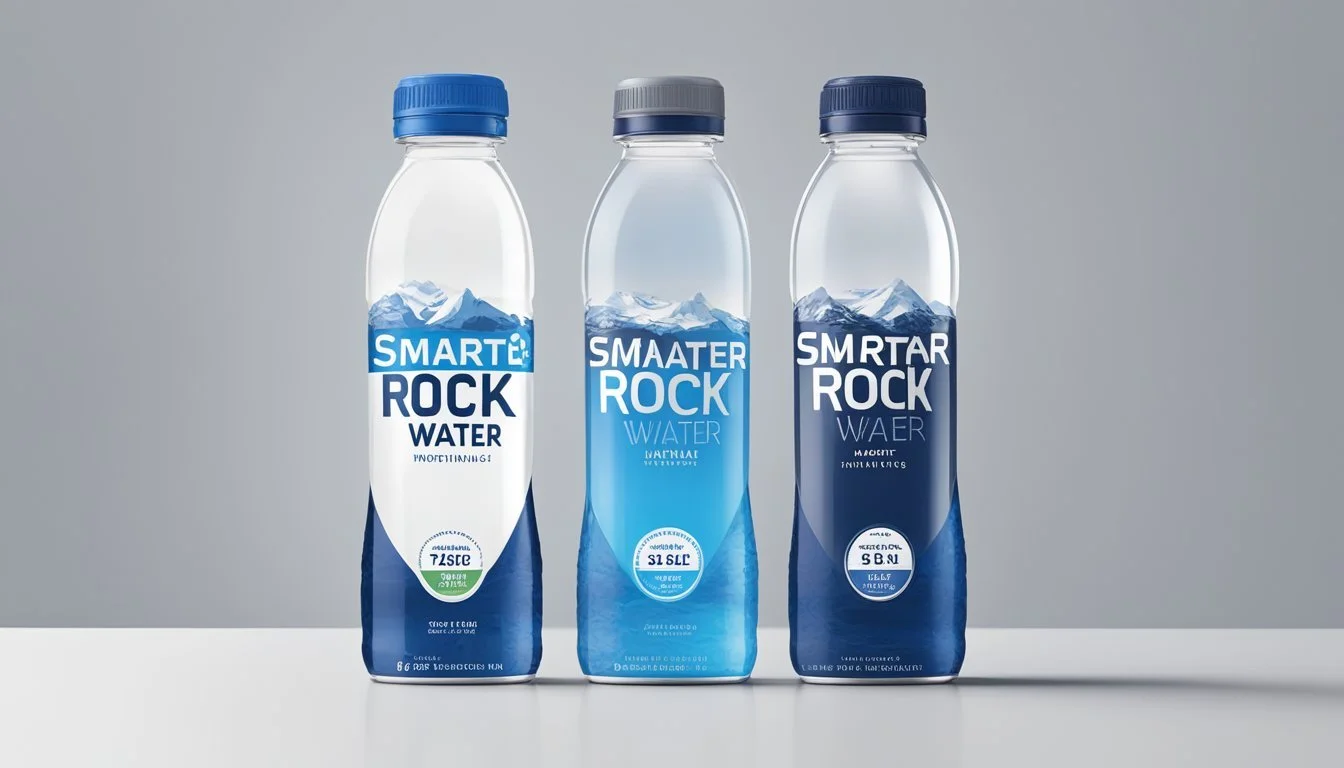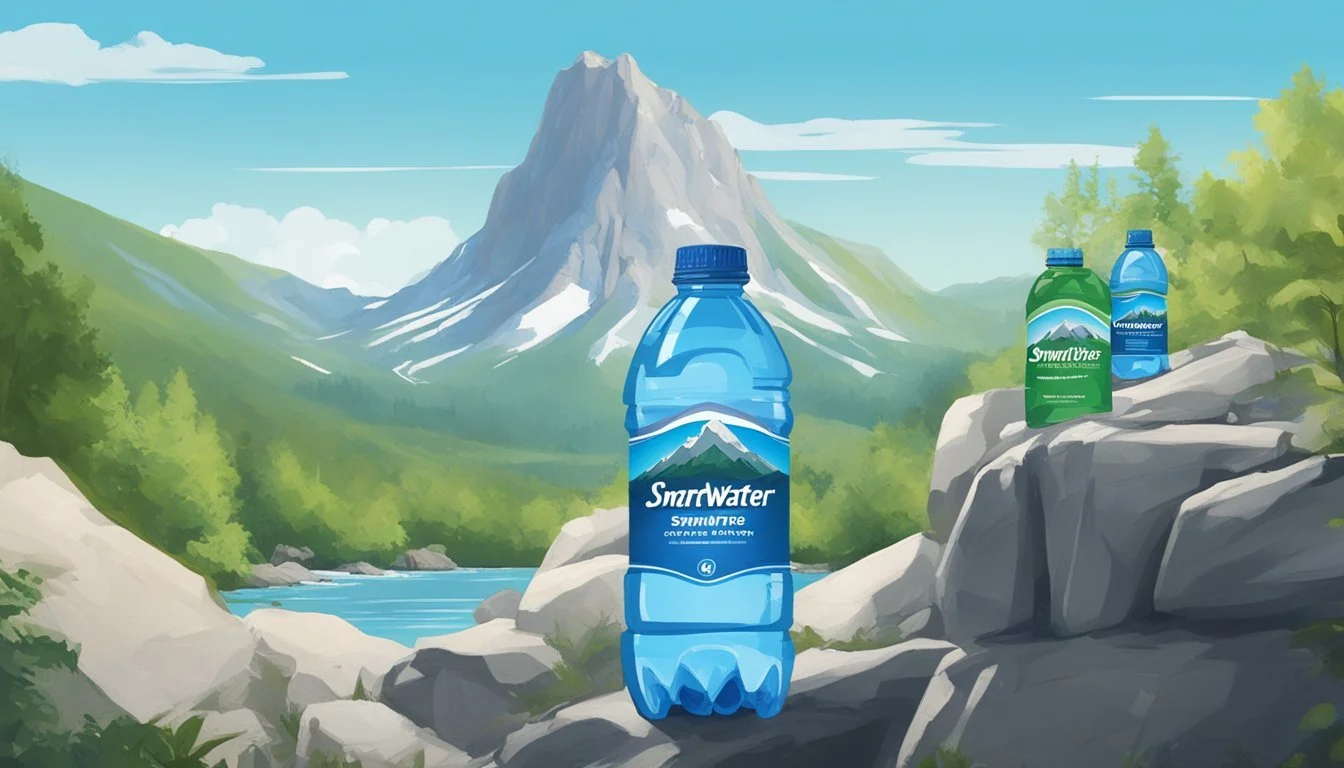Smartwater vs. Castle Rock
Which Bottled Water is Better? A Comparative Analysis
Choosing the right bottled water can often feel overwhelming with so many options available. Among the popular choices are Smartwater and Castle Rock, each with its own unique attributes. For those who prioritize added electrolytes and a clean taste, Smartwater typically stands out as a superior option due to its additional minerals, despite both being calorie-free.
Castle Rock, on the other hand, offers a crisp and refreshing experience reminiscent of a spring water hike in the mountains. Its lack of aftertaste makes it a favorite among those who prefer a pure and straightforward drinking experience. Though Smartwater markets itself with electrolytes and the promise of a balanced pH, Castle Rock's natural sourcing appeals to many enthusiasts who appreciate unaltered spring water.
Ultimately, the decision between Smartwater and Castle Rock may boil down to personal preference and what qualities one values in their bottled water. Each brand provides a different type of refreshment—whether it's the mineral-rich profile of Castle Rock or the enhanced hydration elements found in Smartwater.
Understanding Bottled Water
Bottled water comes in various types, each with unique characteristics. It's crucial to grasp the distinctions between these types, their regulatory standards, and their environmental implications.
Categories and Definitions
Bottled water is categorized based on its source and treatment process. Spring water comes directly from a natural spring and is rich in minerals. Distilled water undergoes boiling and condensation, removing impurities and minerals. Mineral water contains minerals from its source, essential for health. Purified water has been filtered or processed to remove contaminants, similar to regular water but with more rigorous standards.
Vapor distilled water involves vaporization and condensation, resulting in ultra-pure water. Alkaline water has a higher pH level, claimed to neutralize acid in the body. Tap water is municipal water treated for safety but may contain minerals and additives like fluoride.
Regulation and Safety Standards
The FDA regulates bottled water under the Federal Food, Drug, and Cosmetic Act, ensuring it meets safety standards. Bottled water must be processed, packaged, and labeled in sanitary conditions. The FDA sets contaminant limits comparable to EPA standards for tap water.
Spring water and mineral water must meet specific source and mineral content criteria. Vapor distilled and purified water must comply with rigorous purity standards. Producers ensure water safety through testing for chemicals, microbes, and pollutants, maintaining consumer confidence in bottled water quality.
Environmental Impact
Plastic bottles are a significant concern due to plastic waste and environmental pollution. Plastic bottles, made of PET, can take hundreds of years to decompose. BPA exposure from plastic is also a concern. Alternatives like boxed water and glass bottles offer environmentally friendly options.
The production, transportation, and disposal of bottled water contribute to carbon emissions. Recycling programs help mitigate this impact, but only a fraction of plastic bottles are recycled. Shifting to sustainable packaging and improving recycling rates can reduce the environmental footprint of bottled waters.
Exploring the Brands
Smartwater and Castle Rock offer distinct options for those seeking premium bottled water. Both brands emphasize purity and taste through unique processes and sources.
Smartwater: Brand Profile
Smartwater is a product of Glacéau, owned by Coca-Cola. It stands out in the market due to its vapor distillation process. This process involves evaporating water to remove impurities before condensing it back into a liquid state. Electrolytes are added for taste, which enhance its crisp, clean flavor.
Smartwater is often compared to other brands like Aquafina, Dasani, and Core Hydration. It is marketed as a hydrating and refreshing option suitable for day-to-day hydration needs and is available in various sizes to accommodate different consumer preferences.
Castle Rock: Brand Profile
Castle Rock Water is sourced from natural springs located in Mount Shasta, California. It is renowned for its crisp and refreshing taste, originating from pure springs that are protected from contaminants. Unlike some competitors, Castle Rock emphasizes minimal processing to maintain the natural quality of the water.
Castle Rock caters to environmentally conscious consumers by using glass bottles and focusing on sustainability. It competes with other premium brands like Fiji, Evian, and Icelandic Glacial, known for their natural sources and commitment to quality. Castle Rock's dedication to preserving the environment and delivering a pristine product makes it a notable choice in the premium bottled water market.
Health and Hydration
Both Smartwater and Castle Rock aim to offer enhanced hydration solutions through their unique compositions and added electrolytes. While Smartwater incorporates several electrolytes, Castle Rock relies on natural mineral content.
Electrolytes and Mineral Benefits
Smartwater adds electrolytes, including potassium bicarbonate, calcium chloride, and magnesium chloride, to improve taste and aid hydration. These electrolytes can help replenish those lost during physical activity, making it a popular choice for athletes. The presence of potassium aids in muscle function, while calcium and magnesium support bone health and cardiovascular functions. Sodium in Smartwater contributes to maintaining fluid balance and muscle contractions.
Castle Rock focuses on natural mineral content from its source. It contains minerals such as calcium, magnesium, and potassium, essential for bone health, muscle function, and maintaining electrolyte balance. These minerals support overall nutrition and aid in the body's hydration process. Due to its natural sourcing, Castle Rock is also often considered environmentally friendly, as it avoids synthetic additions.
Flavor Profiles and Additives
Smartwater and Castle Rock offer distinct differences in their flavor profiles and additives, affecting both taste and mouthfeel. This section examines the taste experience and the impact of the added compounds on flavor.
Analyzing Water Taste and Mouthfeel
Smartwater, known for its clean and crisp taste, undergoes a distillation process to remove impurities. The addition of electrolytes, including calcium chloride and magnesium chloride, enhances the taste without overwhelming the natural water flavor.
Castle Rock, on the other hand, prides itself on its natural spring water origins. It has a more mineral-rich taste compared to Smartwater. The mouthfeel of Castle Rock water is often described as smooth and slightly silky, reflecting its source's natural mineral content.
Comparison Table:
Brand Taste Mouthfeel Smartwater Clean, crisp Light, refreshing Castle Rock Mineral-rich Smooth, silky
Impact of Additives on Flavor
Smartwater’s signature taste is shaped by the addition of electrolytes such as calcium chloride and magnesium chloride. These additives are intended to enhance flavor and provide a slight mineral taste without leaving any aftertaste. The additives also contribute to a balanced mouthfeel, making the water feel more hydrating.
Castle Rock's water does not typically have added electrolytes. Its flavor profile comes from natural minerals found in its spring source, giving it a distinctive taste without artificial enhancements. This can appeal to those who prefer water that remains close to its natural state, offering a pure and authentic mouthfeel.
In summary, Smartwater's flavor and mouthfeel are notably influenced by added electrolytes, while Castle Rock relies on its natural mineral composition to provide a unique taste experience.
The Source of the Water
Smartwater and Castle Rock both pride themselves on the purity and quality of their water sources, though they use different methods and origins.
Comparing Sources and Purification Processes
Smartwater sources its water through a process called vapor distillation. This involves boiling water to produce steam, which removes impurities. The steam is then condensed back into liquid form. To enhance taste and electrolytes, minerals are added back. This makes the water consistent and pure, akin to distilled water.
Castle Rock sources its water from a natural spring in the Mount Shasta region. The water, naturally filtered through volcanic rock, is bottled at the source. This ensures minimal contamination and maintains its natural mineral content, often associated with spring water. The process may include ultraviolet light and ozone for additional purification without altering the water’s natural properties.
Feature Smartwater Castle Rock Source Vapor distilled water Natural spring water Location Varied Mount Shasta, California Purification Process Vapor distillation, minerals added Natural filtration, UV light, ozone
Each brand offers unique benefits depending on one's preference for distilled versus natural spring water.
Environmental Considerations
Environmental factors play a crucial role in determining the better choice between Smartwater and Castle Rock. Below is an examination of the packaging alternatives and the environmental responsibilities of both brands.
Sustainable Packaging and Alternatives
Smartwater predominantly uses plastic bottles, which raises concerns about plastic waste and BPA exposure. Plastic bottles contribute significantly to environmental pollution due to their long decomposition time and potential release of harmful chemicals.
Castle Rock, however, offers glass bottles as a primary packaging option. Glass is more sustainable as it is fully recyclable and has a lower environmental impact. Additionally, boxed water options provide alternatives that are less harmful to the environment, reducing reliance on plastic.
Water Brands and Environmental Responsibility
Smartwater has initiatives aimed at reducing its environmental footprint, but the use of plastic remains a major hurdle. While efforts to use recycled plastic reduce impact, they do not completely eliminate the environmental concerns associated with plastic production and disposal.
Castle Rock demonstrates a stronger commitment to environmental responsibility with its emphasis on glass and eco-friendly packaging. This choice significantly lowers the environmental impact compared to conventional plastic bottles. Their initiatives often include reducing carbon footprints and advocating for sustainable water management practices.
Both brands are taking steps towards sustainability, but Castle Rock's use of more environmentally friendly packaging gives it an edge in minimizing environmental harm.
Pricing and Consumer Choices
Consumers often weigh both price and key purchasing factors when choosing between Smartwater and Castle Rock bottled water. This section explores how these elements influence their selections.
Affordability vs. Premium Brands
Pricing can vary widely among bottled water brands. Smartwater typically positions itself as a premium option, often priced higher than basic brands but comparable to other premium labels like Voss and Fiji Water. This positioning reflects its unique features, including added electrolytes and vapor-distillation process.
On the other hand, Castle Rock markets itself as a premium yet affordable option sourced from natural springs, often making it a more cost-effective choice for those seeking quality without breaking the budget. In terms of cash spent per bottle, Castle Rock typically offers a compelling value proposition. The choice often boils down to whether a consumer prioritizes specific features over cost.
Factors Influencing Purchasing Decisions
When choosing bottled water, several factors influence consumer decisions. Convenience plays a critical role, with consumers often purchasing what is readily available at stores or gyms. Smartwater leverages its widespread availability and brand recognition, appealing to those who seek a conveniently accessible sports drink.
Factors like taste, source, and health benefits are also pivotal. Values such as environmental impact may sway buyers toward Castle Rock, known for its eco-friendly practices. Cost remains a decisive factor, especially for budget-conscious shoppers.
In the end, the decision between Smartwater and Castle Rock often hinges on personal preferences and individual priorities, balancing factors like budget, convenience, and brand allegiance.
More About Smartwater
Core Hydration vs Smartwater: Which Bottled Water is Better?
Icelandic Glacial vs Smartwater: Which Bottled Water is Better?
Mountain Valley Spring Water vs Smartwater: Which Bottled Water is Better?
Nestle Pure Life vs Smartwater: Which Bottled Water is Better?
San Pellegrino vs Smartwater: Which Bottled Water is Better?
Smartwater vs Aqua Carpatica: Which Bottled Water is Better?
Smartwater vs Cascade Mountain: Which Bottled Water is Better?
Smartwater vs Crystal Geyser: Which Bottled Water is Better?
Smartwater vs Hawaii Volcanic: Which Bottled Water is Better?
Smartwater vs Hawaiian Springs: Which Bottled Water is Better?
Smartwater vs Kirkland Signature: Which Bottled Water is Better?
Smartwater vs Richard's Rainwater: Which Bottled Water is Better?
Smartwater vs Solan de Cabras: Which Bottled Water is Better?
Smartwater vs Talking Rain AQA: Which Bottled Water is Better?
Smartwater vs Whole Foods 365: Which Bottled Water is Better?
Smartwater vs Whole Foods Italian Still Mineral water: Which Bottled Water is Better?
More About Castle Rock
Aqua Carpatica vs Castle Rock: Which Bottled Water is Better?
Castle Rock vs Cascade Mountain: Which Bottled Water is Better?
Castle Rock vs Crystal Geyser: Which Bottled Water is Better?
Castle Rock vs Hawaii Volcanic: Which Bottled Water is Better?
Castle Rock vs Hawaiian Springs: Which Bottled Water is Better?
Castle Rock vs Kirkland Signature: Which Bottled Water is Better?
Castle Rock vs Purely Sedona: Which Bottled Water is Better?
Castle Rock vs Richard's Rainwater: Which Bottled Water is Better?
Castle Rock vs Solan de Cabras: Which Bottled Water is Better?
Castle Rock vs Talking Rain AQA: Which Bottled Water is Better?
Castle Rock vs Whole Foods 365: Which Bottled Water is Better?
Castle Rock vs Whole Foods Italian Still Mineral water: Which Bottled Water is Better?
Core Hydration vs Castle Rock: Which Bottled Water is Better?
Icelandic Glacial vs Castle Rock: Which Bottled Water is Better?
Mountain Valley Spring Water vs Castle Rock: Which Bottled Water is Better?
Nestle Pure Life vs Castle Rock: Which Bottled Water is Better?
Poland Spring vs Castle Rock: Which Bottled Water is Better?
San Pellegrino vs Castle Rock: Which Bottled Water is Better?







